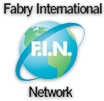Trends in Sustainable Jewelry: What Customers Want in 2025
The demand for sustainable practices in fashion and jewelry has reached unprecedented levels. In 2025, consumers are more conscious than ever about the environmental and ethical impact of their purchases. This growing awareness has shifted the spotlight to sustainable jewelry, where innovation, transparency, and eco-friendly practices drive customer preferences. AmberHats, known for its unique approach, not only offers quality jewelry but also supports ethical business practices by partnering with other vendors and promoting sustainability.
This article explores the top trends in sustainable jewelry that are shaping the industry and what customers are looking for in their next ethical accessory.
Shift Towards Ethical Sourcing
Consumers in 2025 prioritize knowing the origin of the materials in their jewelry. Transparency in the supply chain—from mining to retail—has become a crucial factor. Brands that openly share the journey of their materials, including the people and communities involved, build trust and loyalty among eco-conscious buyers. Conflict-free diamonds and fair-trade metals are especially in demand, as shoppers seek assurance that their purchases do not fund unethical labor practices or environmental degradation.
Use of Recycled and Upcycled Materials
Recycled metals, plastics, and other materials are becoming staples in sustainable jewelry, offering an effective way to reduce waste and minimize the need for new mining. Designers are also redefining creativity through upcycling, repurposing old jewelry or unconventional items like industrial waste to create unique, modern pieces. These approaches appeal to buyers who want both style and sustainability while significantly reducing the carbon footprint of jewelry
Emphasis on Longevity and Timeless Design
In 2025, timeless designs are replacing short-lived trends. Minimalist and classic pieces that can be worn for decades are gaining popularity, aligning with the principles of sustainable consumption. Brands are also focusing on durability by offering repair services, which customers value as a way to extend the life of their jewelry.
Innovative Sustainable Practices
Advances in technology are reshaping the jewelry industry with lab-grown diamonds that are indistinguishable from mined ones, providing an ethical and environmentally friendly alternative. Other sustainable materials, such as wood, bamboo, and lab-created gemstones, are becoming popular options for their aesthetic appeal and eco-friendliness. Brands are also adopting innovative production methods, such as carbon-neutral processes and 3D printing, to create stylish jewelry while minimizing waste and energy use.
Certifications and Trust Factors
Certifications like Fairmined, FSC, and recycled gold marks have become essential indicators of a brand’s commitment to sustainability. Blockchain technology is further enhancing transparency by allowing consumers to trace the entire lifecycle of their jewelry. Brands that prominently display their certifications and utilize blockchain innovations are building trust and credibility with their audience.
Customization and Personalization
Customization offers a sustainable alternative by reducing overproduction. Many customers are drawn to made-to-order pieces that reflect their personal style, while 3D printing enables unique designs with minimal waste.
Local and Artisan-Made Jewelry
Support for locally crafted jewelry is growing as customers recognize the benefits of reducing carbon footprints and preserving traditional craftsmanship. Artisan-made jewelry often incorporates techniques passed down through generations, adding cultural and historical value to each piece.
Marketing Sustainability in Jewelry
Effective communication is crucial for brands looking to connect with eco-conscious consumers. Highlighting eco-friendly practices and ethical sourcing resonates strongly with buyers. Social media platforms play a significant role in showcasing sustainable efforts through visual storytelling and influencer partnerships. However, authenticity remains critical; customers are quick to reject greenwashing, so genuine and verifiable sustainability claims are essential for
Sustainable jewelry in 2025 is characterized by ethical sourcing, innovative practices, and a commitment to longevity and transparency. As customers continue to prioritize sustainability, brands must innovate and adapt to meet these expectations. By embracing these trends, both consumers and the industry can contribute to a more ethical and eco-friendly future.

